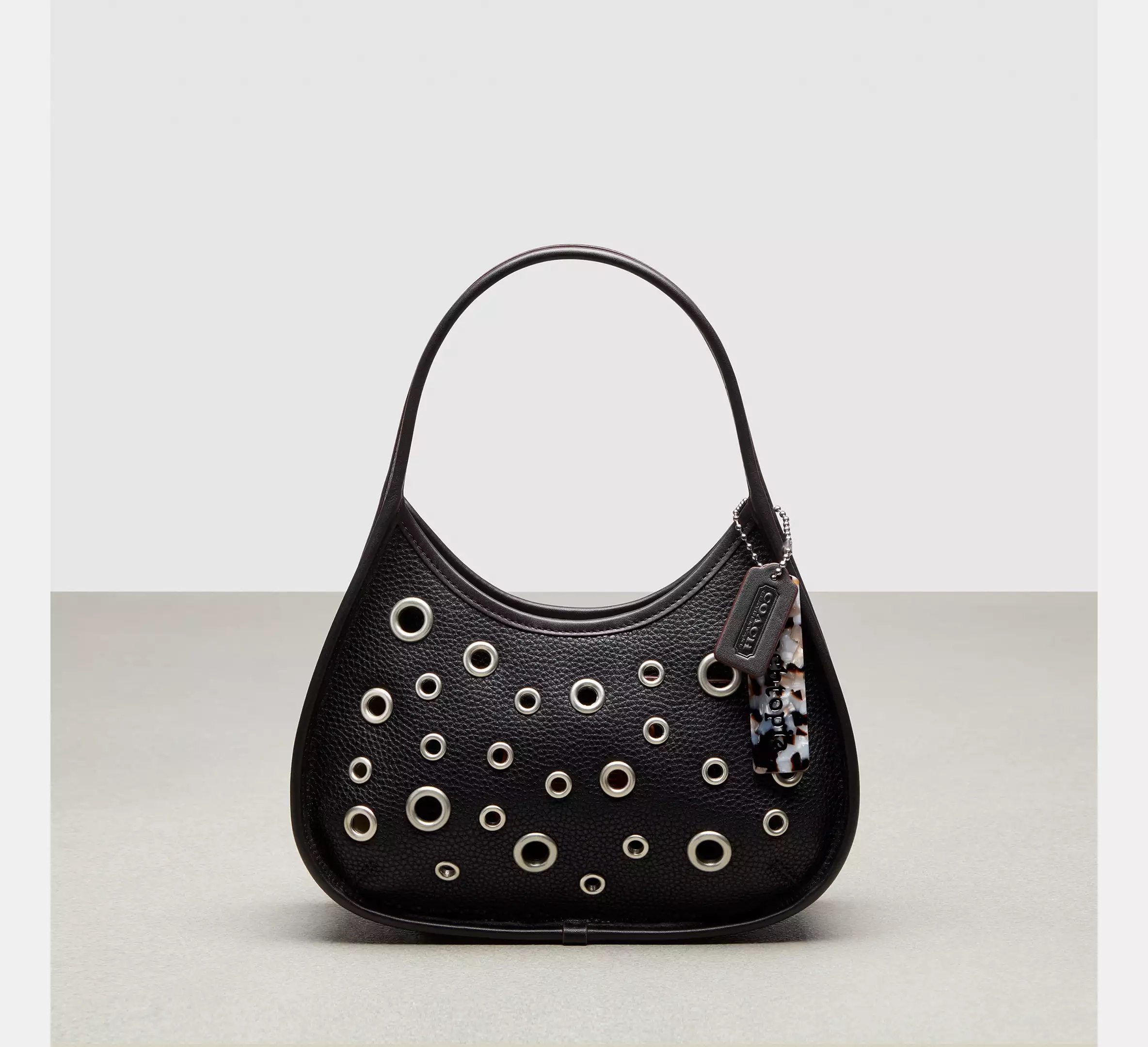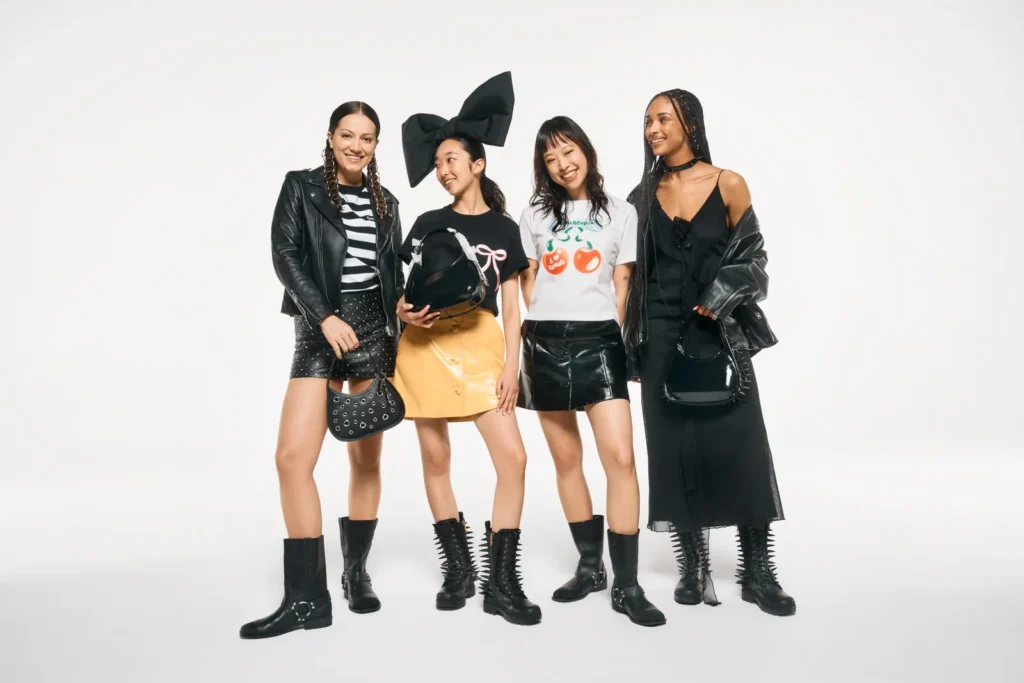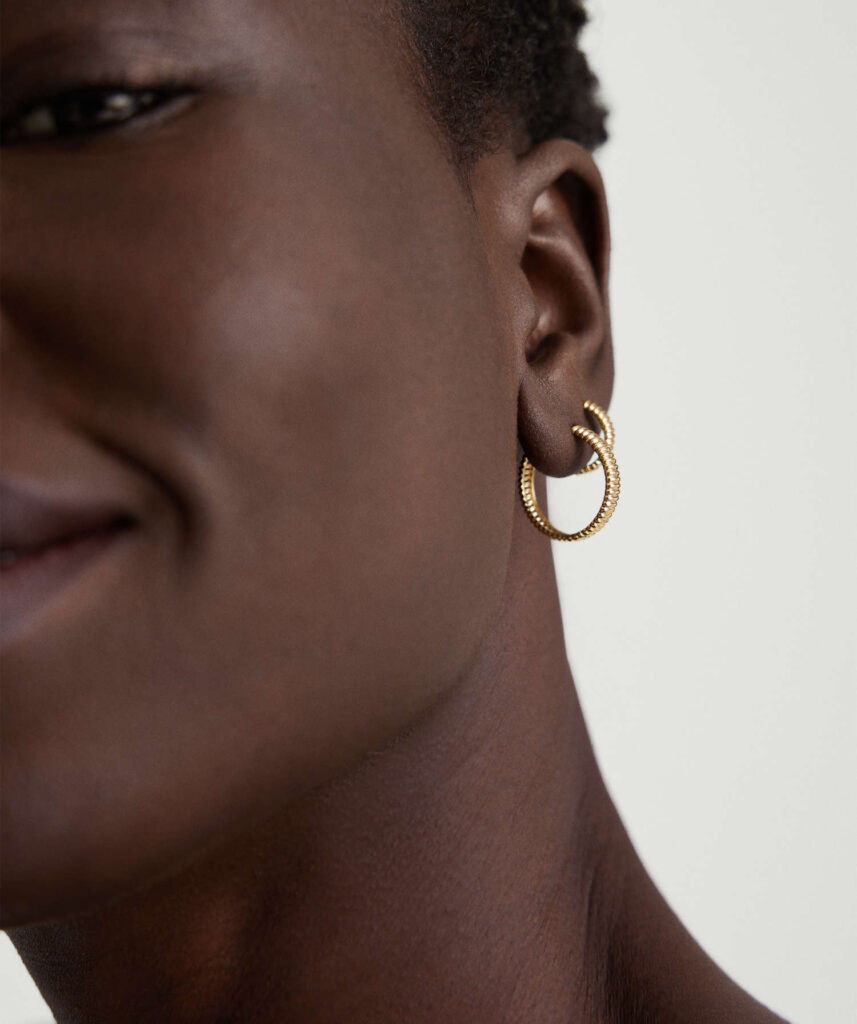Anna Molinari is the first to admit her approach to fashion is unconventional. “Aside from being an art form, I use unconventional materials like trash to create garments that relay a message of sustainability,” the New York City-based artist says. “In my personal styles as well as designs I like to use a playful, quirky approach to outfit-building, while keeping the style elevated.”
Molinari’s signature aesthetic and innovative design outlook made her a perfect fit for a collaboration this spring with American fashion and accessories brand Coach to mark a milestone anniversary for its Coachtopia initiative. “I have worked with Coachtopia multiple times now, and have nothing but good things to say,” Molinari says of the company’s collaborative lab for innovation that aims to close the loop on its circular fashion ambitions. “Not only do we share the same design morals and ethics, but they give young creatives the opportunity and platform to share their creativity. Also, as a clothing designer, I don’t have experience making bags and purses, so when the opportunity to design a purse and learn about the process came along, I jumped at it!”
First launched in April 2023, Coachtopia merges the company’s eight-decade history in leather goods with the forward-thinking approach to fashion championed by young creatives and sustainability insiders. As an example of its impacts, the brand’s Wavy Dinky handbag design, made from “upcrafted” leather, equates to a 71 per cent reduction in carbon emissions due to the use of repurposed materials rather than virgin options.
“We reimagine waste as a valuable raw material and work backward, crafting our products from recycled, repurposed or renewable materials and designing them to live multiple lives with clear pathways for takeback, reuse or recycling,” the company shares on its website.
A staple of Molinari’s design style, grommets were a key feature in her Coachtopia creation.
“I love using grommets unconventionally in my upcycle designs,” Molinari says of the front-and-centre feature of the crescent-shaped Ergo Bag she upcycled for the release. “Grommets typically serve a functional purpose, so I think it’s fun, playful and different to use them decoratively instead. I also think that using metal hardware elevates a piece, and makes it easier to style.”
A fan-favourite within the Coachtopia collection, Molinari admits that maintaining the integrity of the Ergo bag design was a peak priority—and presented the biggest challenge of the partnership. “Whatever upcycle design I decided to go with must be cohesive with the preexisting bag shape and material,” Molinari shares. “So, my mind was immediately drawn to hardware.”
Designed by Molinari, the bag was hand-constructed in the Coachtopia workroom along with the creations by fellow collaborators Sabrina Lau and Zizi Zeng. That first-person connection to the creation process, Molinari says, was one of the most special aspects of the partnership. “As consumers, people tend to only think about the product itself, and not the team behind it—it was eye-opening and heart-warming to meet the individuals who brought my design to life in the workroom and hear about the process. Knowing how your garments and accessories are made, and the environment that they are made in is so important, especially now.”
Indeed, having a greater understanding of and connection to the origin of clothing and accessories is a key pillar of the sustainable fashion movement. According to a 2020 survey of 5,000 people ages 16 to 75 in five major European markets including Italy and the U.K. by Fashion Revolution, 69 per cent of respondents noted a desire to know how their clothes were manufactured. That number is up from 59 per cent in 2018.
With a growing interest in sustainability and transparency, it makes sense that more brands are introducing green initiatives—especially in the accessories space, where companies seem eager to initiate changes that range from the introduction of upcycled materials to full-on end-of-life product recycling. Within the jewelry sector, there’s been a sizeable shift in recent seasons toward more innovation in waste reduction. Canadian brand Mejuri is an example, introducing an interesting material this summer—dubbed Salmon Gold—as part of its ongoing sustainability targets.
“Salmon Gold is an innovative initiative to sourcing gold from Regeneration-associated mines; gold that is fully traceable from its origins while also contributing to habitat restoration,” says Noura Sakkijha, co-founder and CEO of the Toronto-headquartered brand. “It connects biodiversity and environment to our industry in a way that has not been done before.”
More than just a material, Salmon Gold symbolizes how precious metal sourcing can actually do better for the environment rather than being mostly bad. Comprised of 14-karat gold—and featuring the Regeneration logo—the material is gleaned from a re-mining process that sees abandoned mines sites processed for waste and materials while supporting rehabilitation activities and natural environment restoration efforts.
“If left untreated, these abandoned mines pollute sensitive watersheds, ecosystems and native species. Regeneration is reversing the effects of past industrial demands, which altered the flow of rivers, disrupted natural habitats that were vital for the fish populations and left unsecured tailings,” says Sakkijha. “Restoring mines is about creating a space where the habitat can once again support a flourishing ecosystem.”
Perhaps one of the most buzzed-about topics in sustainable accessories—specifically in jewelry—has to do with lab-grown diamonds. Created via a controlled technological process in a laboratory setting, lab-grown diamonds share identical physical and chemical properties to their mined counterparts while being billed by brands as less environmentally impactful and more ethical.
Pandora is one of the leading mass-market jewelry brands betting big on lab-grown diamonds, joining brands like Mejuri, Michael Hill and VRAI in the endeavour. Launched in 2022, the company’s lab-grown gemstones are positioned as having a “lower carbon footprint compared to mined diamonds” while still harbouring the coveted four Cs—cut, colour, clarity and carat—held as a standard in the diamond industry. In addition to offering a sustainable spin on diamond jewelry, lab-grown options often come with a more attractive price that can be 75 to 95 per cent less than mined diamonds.
As more consumers convey their interest in finding eco-friendly options from their favourite fashion accessory brands, shoppers can expect to see more innovation coming from companies that are eager to do better—and keep up. —Aleesha Harris




Be the first to comment